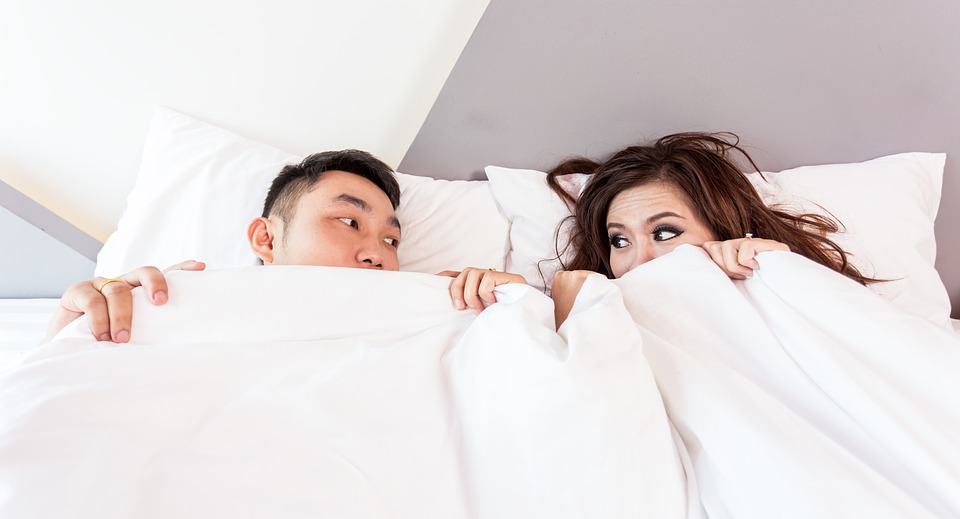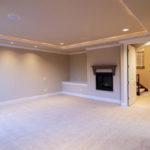 via Pixabay
via Pixabay
There is nothing like coming home after a long day, kicking off your shoes and climbing into a perfectly made bed.
Our bedroom is designed for rest and rejuvenation. Yet, oftentimes we lose sight of the purpose of this room. We bring in TVs, computers, exercise equipment, and before you know it, this room becomes associated with the activity, not rest. Without proper boundaries, our bedroom will become a place the stimulates rather than relaxes. Before we can optimize our room for better sleep, we need to set our intentions straight. Bedrooms are for sleep, sex and snuggles. Nothing else.
With our heads in the right space, here are seven tips for styling your room for better sleep.
Create your sleep oasis
When creating your sleep haven there are a number of intentional interior design choices to be made.
For one, consider the color palette of the room. Did you know, colors have a psychological effect on our mood? When optimizing your room for better sleep, stick to neutral hues and blues. These colors are scientifically proven to calm and relieve tension. Whereas, warm colors are known to energize and stimulate.
Next, consider the layout of the room. The placement of furniture will determine how welcoming the room feels. First, place your bed away from the door. According to Feng Shui experts, a bed that faces the door drains energy from the room. Another reason to think about where your bed goes? The further away it is from the door, the safer we feel. And the safer we feel, the better we sleep.
Other layout tips include keeping a nightstand nearby that contains all the items you need to get a good night’s sleep, as well as, keeping a clear path to the door or bathroom. That way if you have to get up in the middle of the night, you won’t take a tumble.
Kiss the clutter goodbye
Speaking of keeping a clear path to the door, clutter, especially in the bedroom, is known to drain your energy, overwhelm you, create anxious feelings and amplify your stress, the exact opposite of what we aim to achieve – peace! In fact, one study by UCLA found physical clutter overloads your senses, leading to stress. You have enough stressors in your life, you don’t need it from a messy room too.
When learning to clear out the clutter, keep this quote by Marie Kondo, author of The Life-Changing Magic of Tidying Up in mind, “Tidying ought to be the act of restoring the balance between people, their possessions and the house they live in.”
In the bedroom, less is more.
Splurge on your sleeping structure
We spend an average of 27 years in bed over the course of our lifetime, making a mattress arguably the most important piece of furniture we could splurge on.
Our mattress is the performance tool used to getting our best sleep – it has a direct impact on our sleep quality. A mattress isn’t something to go cheap on.
If you have noticed your mattress sagging in the middle, causing you to toss and turn or wake up with aches and pains, it may be time to go shopping.
Block out the light
Light communicates to our body it’s time to stay awake. When optimizing your room for better sleep, consider where sources of light are coming from.
Perhaps, the sun is streaming in through your window at the crack of dawn. Maybe a blue light, the worst kind of light, is spilling out from the TV or your phone. Whatever the case, if you want to get a good night’s sleep, you’ll need to eliminate all or most sources of light come nightfall. This will allow your brain to wind down.
Consider keeping the TV out of your bedroom, turning off your phone an hour before bed or hanging curtains to block the light the early-morning sunlight.
Turn down the temp
If you’ve ever had a fever during the night, you know how hard it is to sleep when you are hot. That’s because, in order for us to fall and stay asleep, our core body temperature must drop one to two degrees.
The optimal temperature for our sleeping environment is 65 to 68 degrees. If that’s too cold for you, don’t worry! You can still pile on the blankets. Even exposing just the top of your head to the cooler air will allow your body to reach the temp it needs for a good night’s sleep.
Nix the noise
The optimal sleep environment is a quiet one. Although you may live in a city laden with noise pollution, there are some internal sources of noise you have control over, even if you can’t control the outdoors.
Does your bedroom share a wall with the laundry room or your kiddo’s room? If so, try moving your bed away from that shared wall. Another suggestion is to avoid running appliances like the washer machine or dishwasher at night to eliminate unnecessary disturbances. If you still can’t seem to solve the noise problem, try using a white noise machine or earplugs to mask the noise.
Fill the room with flourishes
Besides being a tranquil addition to any room, plants can actually improve your sleep! That’s because they purify indoor air by absorbing harmful toxins through their leaves while simultaneously replenishing oxygen levels.
The improvement of indoor air quality through plants lessens the chance of allergies, breathing difficulties and airway irritation. The result? A more peaceful sleep.
Some of the best plants for air purification are English ivy, golden pothos and aloe vera.
Interior design goes far beyond looks. It’s about functionality. Now you can sleep easy at night knowing your room is helping you get your best sleep possible!


